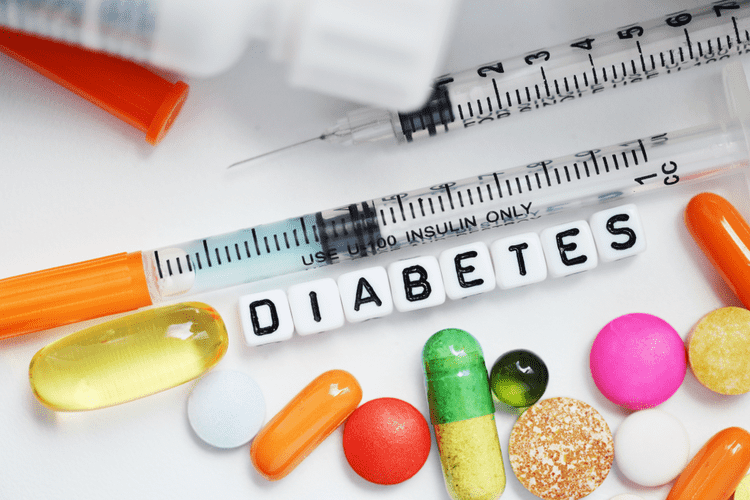5One mechanism by which electrochemical signal transmission between neurons is terminated is by reuptake of the neurotransmitter into the signal-transmitting cell. When excess neurotransmitter remains in the synapse, receptors on the presynaptic terminal are activated to prevent the release of more neurotransmitter into the synapse. Some drugs target these presynaptic receptors by blocking this “termination” signal. There are several types of GABAA subunits, and the subunit composition of the receptors differs among different brain regions and may change in response to environmental changes. The journey to recovery from alcoholism is often a collaborative effort, with support groups and community resources playing a critical role. Alcoholism, also known as alcohol use disorder (AUD), is a complex condition influenced by a variety of genetic and biological factors.
What does it mean to drink in moderation?
The clinical efficacy of naltrexone is believed to be mediated through interactions between dopamine and the endogenous opioid neuropeptide systems.8 The endogenous opioids are involved in the expression of alcohol’s reinforcing effects and may promote drug-seeking behaviors. In animal models, alcohol administration was shown to promote β-endorphin release in regions of the brain that are involved in reward.38 Relief of the tonic inhibiting effects of GABA neurons by β-endorphins http://ecoalfa.ru/news.448128.New-technical-solutions-for-the-production-of-rare-metals.html in the VTA promotes dopaminergic signaling from this area of the brain to the NAc. Group meetings are available in most communities at low or no cost, and at convenient times and locations—including an increasing presence online. This means they can be especially helpful to individuals at risk for relapse to drinking. Combined with medications and behavioral treatment provided by health care professionals, mutual-support groups can offer a valuable added layer of support.
How doctors diagnose alcohol dependence

In addition to the extant literature on the importance of brain reward circuits in the development of alcohol dependence, recent research has focused on a new contingent of neural systems that play central roles in the regulation of stress and anxiety as well as mediate executive functions. This joint focus on brain arousal, reward, and stress systems, along with the integration of new technologies in the field, is accelerating our understanding of the components of alcohol dependence and contributing to the development of new treatment strategies. https://homereonflint.com/tag/repair A neural circuit can be conceptualized as a series of nerve cells (i.e., neurons) that are interconnected and relay information related to a specific function. Within such a circuit, information is passed between neurons via electrochemical signaling processes. Activated neurons release chemical signaling molecules (i.e., neurotransmitters) that bind to specific proteins (i.e., receptors) on other neurons. Depending on the neurotransmitter involved, this binding leads to the electrical excitation or inhibition of subsequent neurons in the circuit.

9. CURRENT CARE IN THE NATIONAL HEALTH SERVICE
Approximately one third of specialist alcohol services exclusively provide treatment for people with alcohol problems, but the majority (58%) provide services for both drug and alcohol misuse. In general, offspring of parents with alcohol dependence are four times more likely to develop alcohol dependence. Evidence from genetic studies, particularly those in twins, has clearly demonstrated a genetic component to the risk of alcohol dependence. A meta-analysis of 9,897 twin pairs from Australian and US studies found the heritability of alcohol dependence to be in excess of 50% (Goldman et al., 2005).
Alcohol Addiction: Signs, Physical & Mental Health Effects & How to Cope During Recovery
- Here’s a breakdown of alcohol’s effects on your internal organs and body processes.
- Accordingly, researchers more recently have started to condense the time scale required for such analysis by using specific procedures to induce dependence more rapidly (e.g., by exposing the animals to alcohol vapor).
- Fortunately, Volkow and her colleagues’ argument carried the day with the American Psychiatric Association’s DSM-5 committee in 2013.
The prevalence of alcohol-use disorders in this population has been reported to be between 38 and 50% in the UK (Gill et al., 1996; Harrison & Luck, 1997). In the US, studies of this population typically report prevalence rates of 20 to 45%, depending on sampling methods and definitions (Institute of Medicine, 1988). Further, it is important to note that due to age-related changes in metabolism, intercurrent ill health, changing life circumstances and interactions with medications, sensible drinking guidelines for younger adults may not be applicable to older people (Reid & Anderson, 1997). Equivalent levels of alcohol consumption will give rise to a higher blood alcohol concentration in older people compared with younger people (Reid & Anderson, 1997). The US National Institute of Alcohol Abuse and Alcoholism (NIAAA) has therefore recommended people over the age of 65 years should drink no more than one drink (1.5 UK units) per day and no more than seven drinks (10.5 UK units) per week. A related issue is that standard alcohol screening tools such as the AUDIT may require a lower threshold to be applied in older people (O’Connell et al., 2003).
Those with mild to moderate symptoms may receive treatment in an outpatient setting. You should ask a loved one to stay with you during this process, and you may need to visit a clinician for daily monitoring. People who have a dependence on alcohol exhibit some or all of the https://vmeda.spb.ru/page4.html following characteristics. This change was made to challenge the idea that abuse was a mild and early phase of the illness and dependence was a more severe manifestation. Drinking too much alcohol can lead to short-term side effects such as memory problems or blacking out.
- Within such a circuit, information is passed between neurons via electrochemical signaling processes.
- For some alcohol abusers, psychological traits such as impulsiveness, low self-esteem and a need for approval prompt inappropriate drinking.
- One hypothesis is that this negative emotional state contributes to relapse behavior.
- Thus, alcohol consumed during rapid development (i.e., prior to or during puberty) has the potential to disrupt normal growth and endocrine development through its effects on the hypothalamus, the pituitary gland, and the various target organs such as the ovaries and testes.
It can be dangerous to stop drinking too quickly without proper support if you have these symptoms. The Recovery Village Columbus offers several treatment options, including medical detox, inpatient rehab, and more to provide you with personalized care at our Joint Commission-accredited facility. Contact a Recovery Advocate today to take the first step toward living an alcohol-free life. Delirium tremens is a symptom of severe alcohol withdrawal that can be potentially fatal. Contact emergency services immediately if you experience symptoms such as fever, involuntary muscle contractions, seizures, delusions, hallucinations, or rapid mood swings as you withdraw from alcohol. Before you decide to stop drinking, talk to a healthcare provider to determine what treatment options are available and whether you would benefit from medical supervision during detox.
What Are the Long-Term Effects of Alcohol Use?
The mortality rate is high in this population, nearly four times the age-adjusted rate for people without alcohol dependence. Those who are more severely alcohol dependent are less likely to achieve lasting stable moderate drinking and have a higher mortality than those who are less dependent (Marshall et al., 1994). It is important to note that most of the excess mortality is largely accounted for by lung cancer and heart disease, which are strongly related to continued tobacco smoking. As noted earlier, people who are alcohol dependent have higher rates of comorbidity with other psychiatric disorders, particularly depression, anxiety, post-traumatic stress disorder (PTSD), psychosis and drug misuse, than people in the general population. Alcohol can, temporarily at least, reduce the symptoms of anxiety and depression, leading to the theory that alcohol use in this situation is a form of ‘self-medication’.


